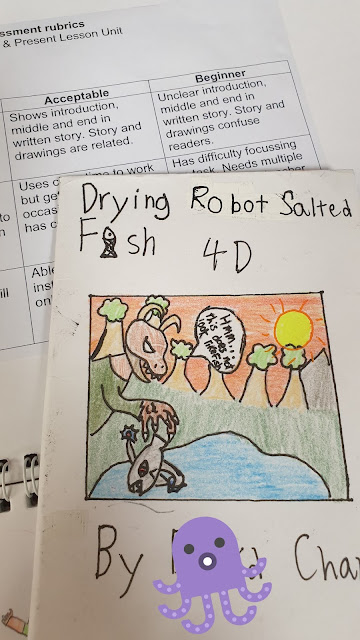Hi! I repeated a lesson from the previous year but our focus this term is mostly on composition during art class. The students are familiar with the term composition because it means story writing in English class. Activating students' prior knowledge is a given when teaching something new in any subject. In fact, writing composition means putting things together in an orderly manner. You can think of it as stringing sentences such that it seems coherent and logical to bring forth ideas and structure.
Composition in Art is a similar concept in which different elements in of an artwork is combined so that its whole is greater than the sum of the parts. In Photography, there are composition rules or formula that creates interesting viewpoints to the viewer. In posters designs, prints or books, the composition can work in tandem with the content to bring out the best.
A book that shows how composition can affect the viewers is Picture This: How Pictures Work by Molly Bang. The author uses the story of Little Red Riding Hood and illustrations of graphic artworks to tell a story that engages the affective domain.
It's because of how the focus changed this time that the students were more invested in the layout of their artbooks. Rather than just separating illustrations and text on each page, making their stories seem very predicable and mundane, the current students put more thoughts into planning and making full use of the limited space which in turn produces more visual elements.





































